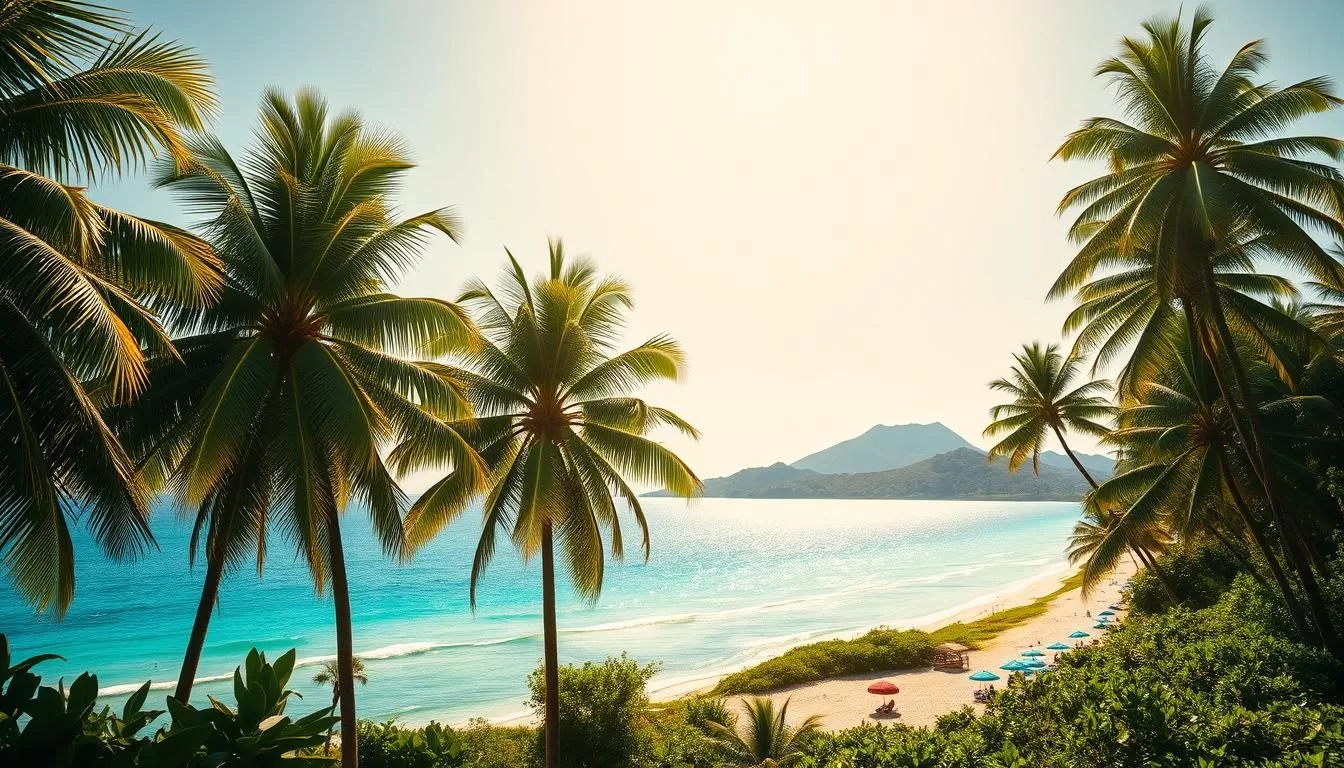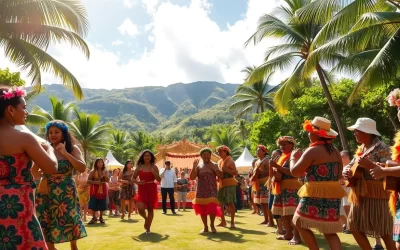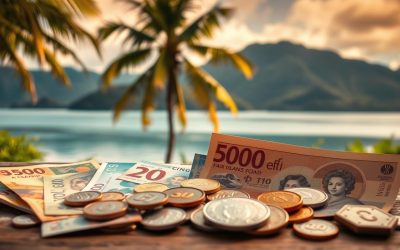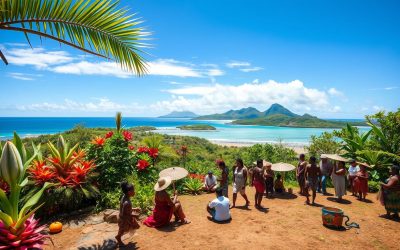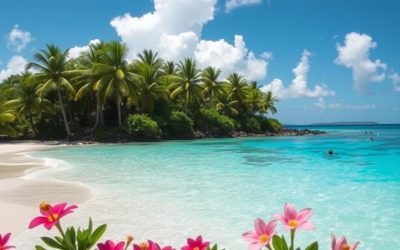Planning a trip to the Cook Islands in the South Pacific requires more than just picking a destination; it demands timing your visit right to make the most of your tropical getaway.
The Cook Islands boast a tropical oceanic climate, characterized by pleasant weather and stable temperatures throughout the year. However, understanding the nuances of their weather patterns is crucial for a memorable trip.
With two main seasons – a wet season from December to March and a dry season from April to November – and a yearly average rainfall of 79 inches, timing your trip becomes essential. You need to consider what matters most to you: perfect beach weather, fewer crowds, or better prices.
This guide provides you with comprehensive weather information to help you make an informed decision about the best time to visit the Cook Islands.
The Cook Islands: Paradise in the South Pacific
Spread across 850,000 square miles of the South Pacific, the Cook Islands are a haven for travelers seeking a tropical climate. The archipelago consists of 15 main islands, each offering a unique experience.
Geography and Island Overview
The Cook Islands are divided into the Northern and Southern Groups, with the latter being more developed and accessible. Rarotonga, the largest island, is the main gateway and features volcanic mountains and an encircling lagoon. Other islands like Aitutaki are also worth exploring for their untouched beauty.
Tropical Climate Essentials
The Cook Islands boast a consistent tropical climate year-round, with average highs between 77°F to 86°F and lows between 68°F to 77°F. The water temperature remains steady, ranging from 75°F to 82°F, making it ideal for swimming and water activities throughout the year.
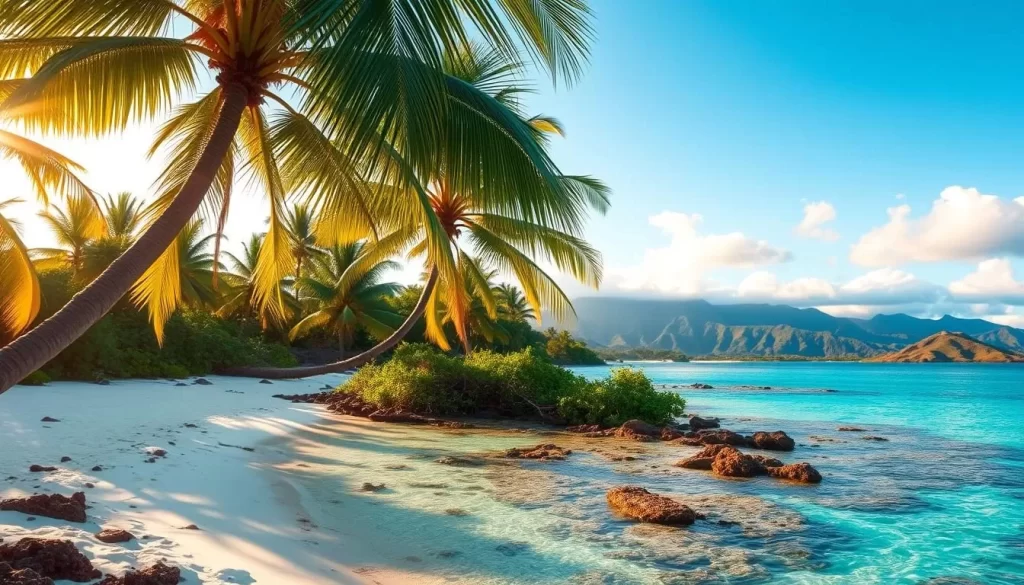
Understanding Cook Islands Weather Patterns
Understanding the weather patterns in the Cook Islands is crucial for planning your trip. The Cook Islands experience a tropical climate characterized by two distinct seasons: a dry season and a wet season.
The Dry Season: April to November
The dry season, which spans from April to November, is marked by average highs of 77°F to 82°F. During this period, the humidity is relatively low, and rainfall is significantly reduced. July and August stand out as the coolest and driest months, with nighttime temperatures dropping to a comfortable 68°F. This makes it an ideal time for outdoor activities and exploring the islands.
The Wet Season: December to March
In contrast, the wet season, from December to March, experiences more humidity and increased rainfall, with daytime temperatures reaching around 84°F. Although it tends to rain heavily, the downpours are usually brief, occurring either in the morning or afternoon, thus minimizing disruption to your day. It’s also worth noting that the Cook Islands can be affected by tropical cyclones during this time, although the impact is generally less severe than in other Pacific regions.
Understanding these weather patterns can help you plan your activities and make the most of your time in the Cook Islands. Whether you’re looking to enjoy water sports or simply relax on the beach, knowing what to expect from the weather can enhance your overall travel experience.
Cook Islands: Best Months for a Weather-Savvy Trip
The best time to visit the Cook Islands depends on your preferences regarding weather and tourist crowds. Understanding the different seasons can help you plan a trip that suits your needs.
Peak Season: June to August
The peak travel season in the Cook Islands is between June and August, coinciding with the Southern Hemisphere’s winter. During this time, the weather is usually sunny, with warm temperatures that are not too hot. You may even need a sweater or light jacket at night. Many tourists from New Zealand and Australia visit during this period, especially during the winter school holidays.
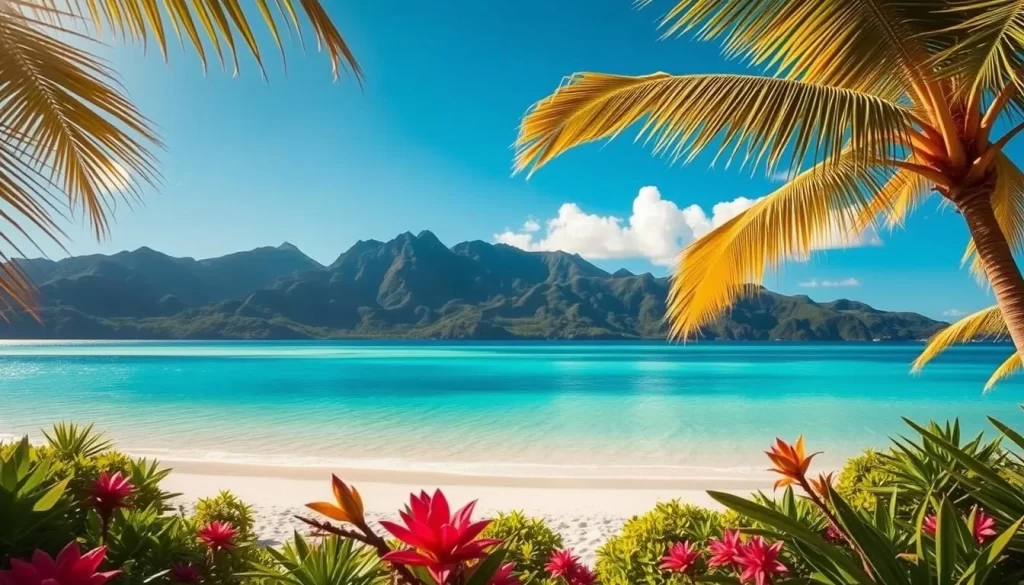
Shoulder Seasons: April-May and September-October
The shoulder seasons, which include April-May and September-October, offer pleasant weather with warm temperatures. There’s a higher risk of rain compared to the peak season, but the periods are less busy with tourists from New Zealand and Australia. You may find lower prices for accommodation and activities during these times.
| Season | Weather | Tourist Crowds | Prices |
|---|---|---|---|
| Peak Season (June-August) | Sunny, warm | High | Higher |
| Shoulder Season (April-May, September-October) | Pleasantly warm, some rain | Moderate | Moderate |
| Off-Peak Season (November-March) | Higher humidity, rain | Low | Lower |
Off-Peak Season: November to March
The off-peak season, from November to March, is characterized by higher humidity and increased rainfall, with a risk of tropical cyclones. While this period may not be ideal for everyone, you may find lower prices and fewer tourists. If you’re looking for a more secluded trip and don’t mind the weather risks, this could be a good time to visit.
Month-by-Month Weather Guide
For a weather-savvy trip to the Cook Islands, navigating the month-by-month weather guide is key to an unforgettable experience. Understanding the weather patterns throughout the year will help you plan your activities and make the most of your visit.
Summer Heat and Rain: January to March
The Cook Islands experience their summer during January to March, characterized by higher temperatures (82-86°F) and increased humidity. This period also sees heavier rainfall, with an average of 9-10 inches monthly. There’s a slight risk of cyclones during these months. Aitutaki and Rarotonga, two of the main islands, have similar weather patterns, with Aitutaki being slightly warmer.
Transition to Dry Season: April to June
As the Cook Islands transition from the wet season to the dry season, rainfall gradually decreases from 12 inches to 6 inches. Temperatures also drop slightly, making it a comfortable time to visit. The sea conditions start to calm down, making it ideal for water activities.
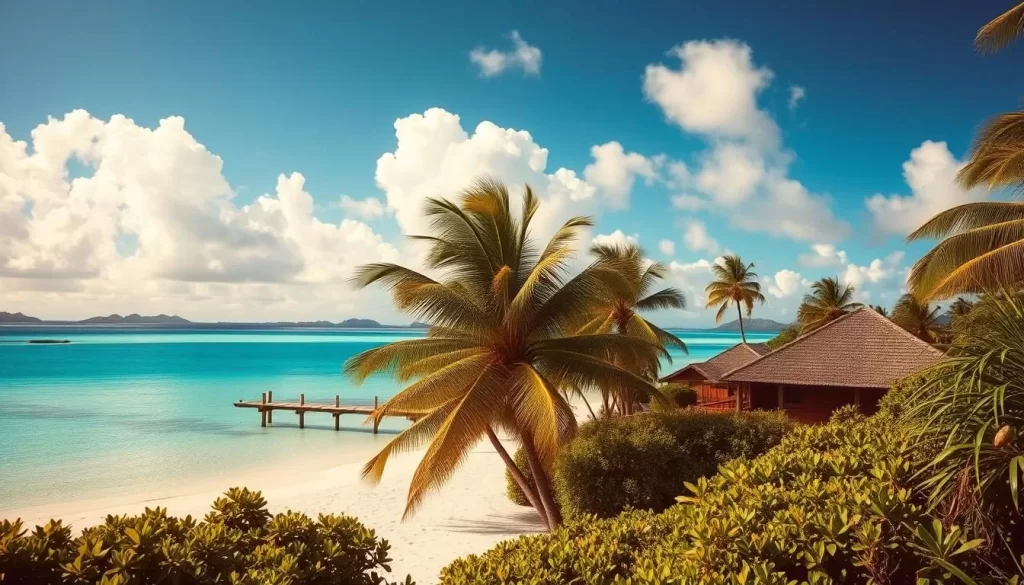
Prime Visiting Time: July to September
The period from July to September is considered the prime time to visit Cook Islands. The weather is stable, with low rainfall (3-6 inches monthly) and comfortable temperatures (75-81°F). The sea conditions are calm, and the water visibility is excellent, making it perfect for snorkeling and diving.
Transition to Wet Season: October to December
As the Cook Islands transition back to the wet season, temperatures and rainfall start to increase. By December, the islands return to summer conditions, with Aitutaki and Rarotonga experiencing temperatures around 84°F and 81°F, respectively.
| Month | Aitutaki Temperature (°F) | Rarotonga Temperature (°F) | Rainfall (inches) |
|---|---|---|---|
| Jan-Feb | 86 | 82 | 9-10 |
| Mar-Apr | 86 | 81-82 | 8-9/9-12 |
| May-Jun | 82 | 75-77 | 4-7/6-8 |
| Jul-Aug | 77-81 | 75 | 3-4/5-6 |
| Sep-Nov | 81-84 | 77-79 | 4-6/5-7 |
| Dec | 84 | 81 | 9/11 |
By understanding these monthly weather patterns, you can plan your trip to the Cook Islands according to your preferences, ensuring a memorable and enjoyable experience.
Weather Differences Between the Islands
When planning your trip to the Cook Islands, understanding the weather differences between the islands is crucial for a memorable experience. The Cook Islands, comprising 15 islands, offer a diverse range of climates and weather conditions.
The largest island, Rarotonga, has a distinct climate profile. Being the southernmost and largest of the main islands, Rarotonga experiences slightly cooler temperatures, typically 2-4°F lower than the northern islands throughout the year.
Rarotonga’s Climate Profile
Rarotonga’s mountainous interior creates its own microclimate, sometimes trapping clouds and creating brief rain showers even during the dry season. This unique topography means that weather conditions can vary significantly across the island.
Aitutaki and Other Islands
Aitutaki, the second-most visited island, boasts a different weather pattern. Its flatter topography and more northerly position result in slightly warmer temperatures, less rainfall, and more consistent sunshine compared to Rarotonga. Other islands like Atiu, Mangaia, and the Northern Group islands have their unique weather characteristics, with Atiu having 28 lovely, wild beaches but lacking a protective lagoon, making its beaches less sheltered.
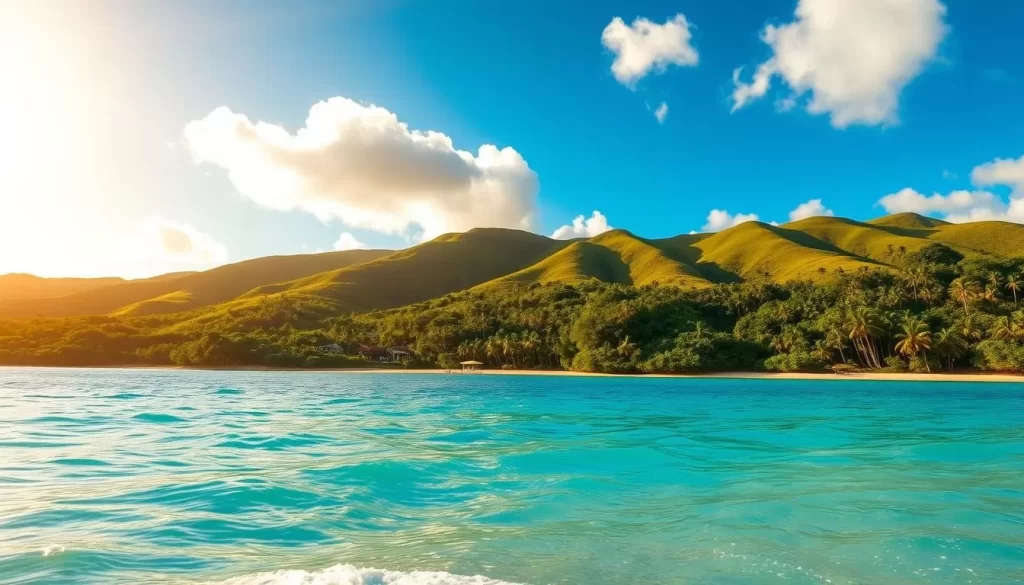
Understanding these differences is key to planning your island-hopping itinerary and making the most of your trip. The presence or absence of protective lagoons affects beach conditions and water activities on different islands throughout the year. Additionally, travel to outer islands requires additional planning due to limited flight schedules that vary seasonally.
Planning Activities Around the Weather
When visiting the Cook Islands, understanding how to plan your activities around the weather can greatly enhance your trip. The islands offer a range of activities that are weather-dependent, making it crucial to choose the right time for your preferred activities.
Best Times for Water Sports and Beach Activities
The dry season, from April to November, is ideal for water sports and beach activities in the Cook Islands. During this period, the seas are calm, and visibility for snorkeling and diving is at its best, with up to 100 feet of visibility in some locations. Kitesurfing is best during the dry season as well, with trade winds being strongest in July and August.
| Activity | Best Time | Weather Conditions |
|---|---|---|
| Snorkeling/Diving | Dry Season (April-November) | Calm seas, high visibility |
| Kitesurfing | July-August | Strong trade winds |
| Surfing | Wet Season (December-March) | Best swells |
Hiking, Cultural Events, and Land Activities
For those who enjoy land activities, the Cook Islands offer a range of options, including hiking Rarotonga’s cross-island track and other trails. The dry season is less muddy, making it ideal for hiking. However, the wet season brings out vibrant vegetation and waterfalls, making it a great time for those who enjoy lush landscapes. Cultural events and Island Nights shows are available throughout the year, providing entertainment on rainy days.
Practical Travel Considerations
To make the most of your visit to the Cook Islands, understanding the practical travel considerations is crucial. This includes being aware of pricing fluctuations, crowd levels, and packing recommendations throughout the year.
Pricing and Crowds
The Cook Islands are not a budget destination, with prices for accommodation, food, and souvenirs similar to those in New Zealand. Expect significant price variations between peak season (June-August) and off-peak times, with accommodation rates often 20-30% higher during New Zealand and Australian school holidays. Flight availability and pricing also vary throughout the year, with more frequent and potentially cheaper flights from New Zealand during shoulder seasons.
Packing for Different Seasons
Packing for the Cook Islands depends on the time of year you visit. For the wet season, bring lightweight rain gear, while light sweaters are recommended for cooler dry season evenings. Understanding how crowd levels impact your day-to-day experiences, such as restaurant availability and tour bookings, will also help you plan your trip.
Conclusion: Making the Most of Your Cook Islands Trip
The Cook Islands beckon with their natural beauty and warm hospitality, making them an ideal destination, regardless of the time of year you choose to visit. While the dry season, from April to November, is considered the best time to visit the Cook Islands, each season offers unique advantages. For instance, September stands out with its excellent weather, fewer crowds, and slightly lower prices. Proper planning around seasonal weather patterns will help ensure a memorable and enjoyable Cook Islands trip.
Regardless of when you visit, the Cook Islands‘ crystal-clear waters and warm hospitality remain constants throughout the year. By being flexible with your travel dates, you can have a wonderful vacation experience.
